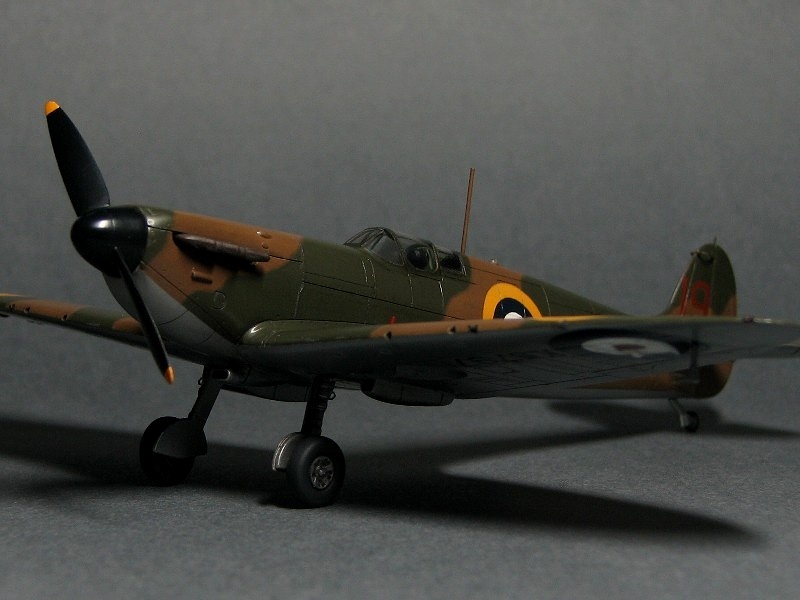
Spitfire Mk.I Tamiya 1/72
 |
|
The shape and size of the Mk.I slide canopy are different from the late Mk.V canopy. See the following figure. The late Mk.V (Blue) is higher and longer than Mk.I (Red). Be careful that many of kits don't distinguish them. On the other hand, the angle of the windscreen is unchanged through very early Mk.I (Green) to late Mk.V .
The superimpose of cross sections shows the transition of the surface.
|
 The upper is Tamiya and the lower is new Airfix. The Tamiya fuselage is a little short. |
 Tamiya is red and the actual aircraft is blue. The fuselage length is adjusted. |
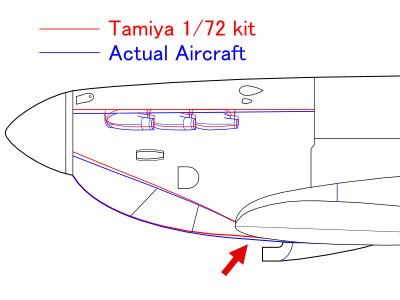 The blue line is actual aircraft and the red line is Tamiya kit. Note the step of Tamiya kit at the red arrow. |
|
Calculating from photos of the actual aircraft, the correct width of the upper cowl is 72cm (28.3"). The maximum width of Merlin engine (1 stage type) is 76cm (29.8") in the catalog. Thus, the engine cylinder head is not the maximum width. I think it includes the generator. |
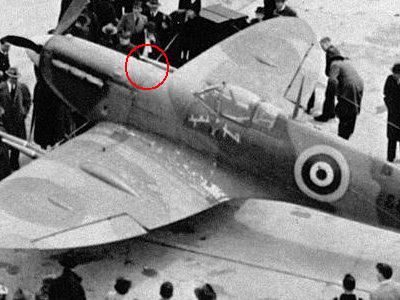 Seeing from this angle, the nose line of the actual aircraft is not bent at the red circle but almost straight. Be careful this picture is mirror-reversed. |
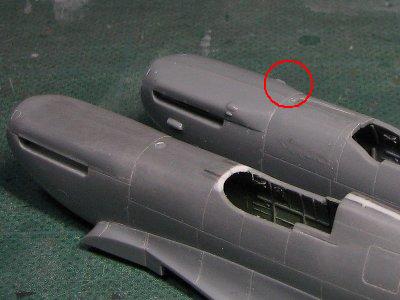 The upper is Tamiya original. The line is bent at the red circle. The lower is under correction work (not finished). |
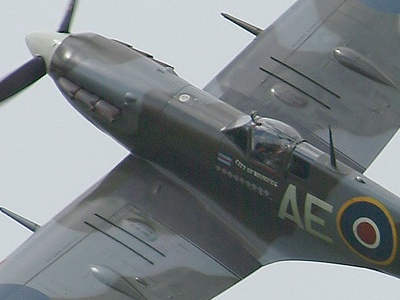 The nose line is slightly bent in this angle. |
 The Mk.IX cowl is a little different from Mk.I. |
 Though, the engine cylinder head is out of the firewall. |
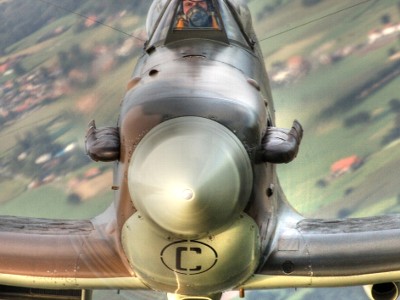 This photo shows the absolute width of the upper cowl. |
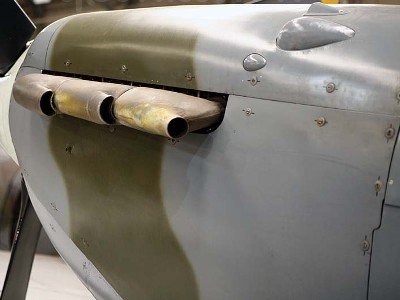 Merlin engine is inside. This picture is mirror-reversed as well. |
 This is the typical image. This image is important in correction works. |
|
The blue line is the actual aircraft, the red is Tamiya kit and green is actual Mk.IX. |
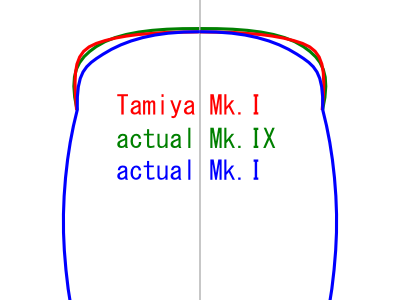 |
|
In accordance with above analysis, I corrected the kit nose cowl. |
 The correction work is finished. |
 The upper is new Airfix, the center is Tamiya original and the lower is old Airfix. The old Airfix is the best as for above point. |
|
|
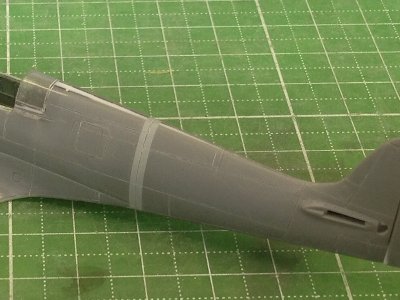 Furthermore, the length of the rear fuselage was extended by 1.5mm (0.06"). |
 At first, only the upper wing parts were glued on the fuselage with thin cement. After that, the lower part was to be glued. |
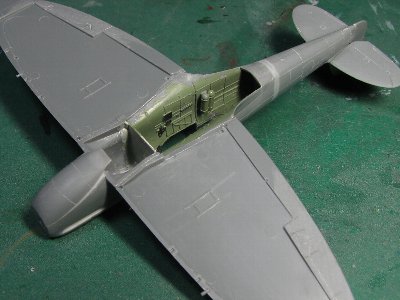 I mistook the color of rear fuselage. Silver is correct. But when I noticed, I already glued the canopy and wing. |
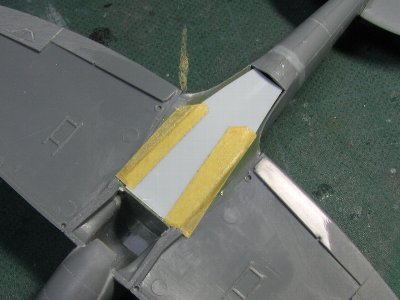 The bulkhead and floor were glued to block dust and to keep windows clean. |
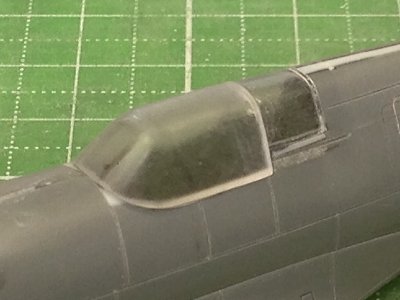 I used the new Airfix early Mk.I canopy part. The third fixed canopy was cut out and glued on the fuselage first. Then the surface was sanded to flat. |
 The kit frames were sanded to flat and they were newly engraved. |
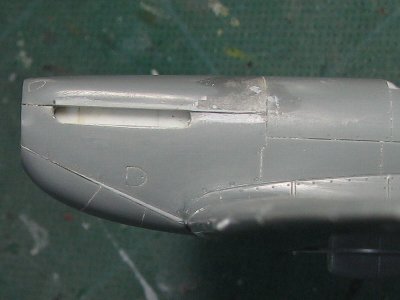 The lower cowl was corrected. The styrene sheet shim was inserted to the kit lower cowl |
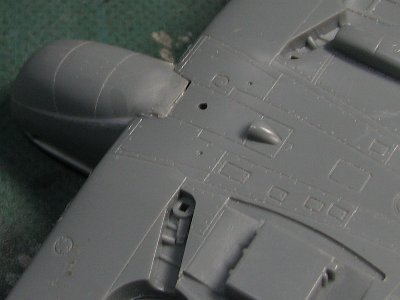 The gap between the lower cowl and wing was covered with the air intake. |
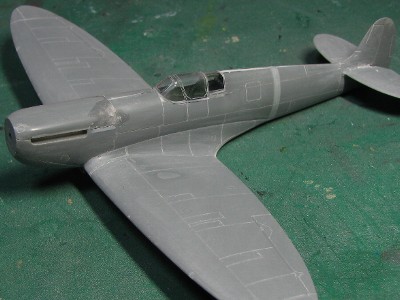 |
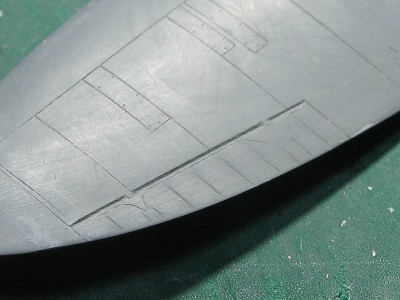 The kit mold of aileron was sanded and rib tapes were depicted with a knife. |
|
|
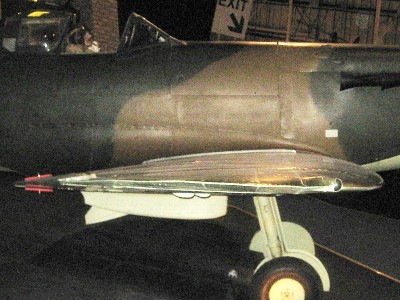 The washout of the spitfire is more than 2üŗ. See this photo. Tamiya 1/72 kit is not perfectly represent. |
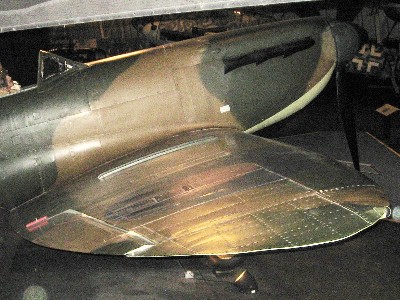 The wing tip is very sharp. |
|
|
 The propeller and spinner were from the new Airfix kit. The kit parts are generally correct. So I made only minor corrections. |
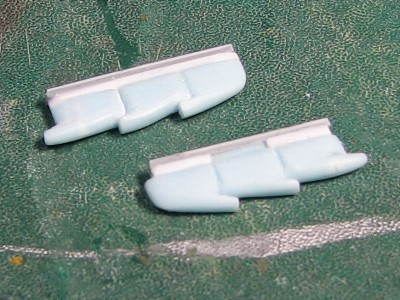 Exhaust pipes were from old Airfix Mk.I. |
|
|
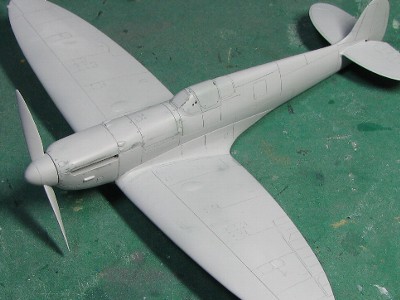 Mr. Color Surfacer was sprayed. |
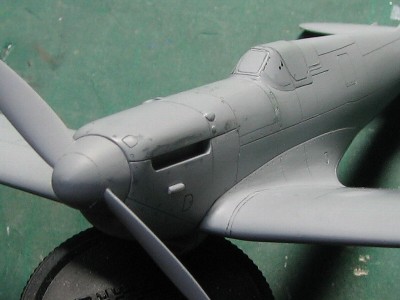 See the corrected cowl. |
|
|
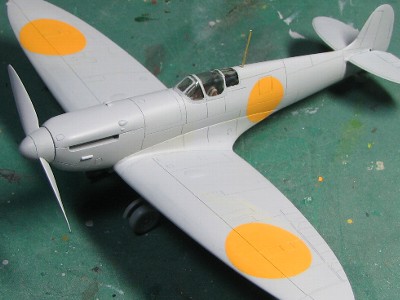 All of roundels were painted. At first, Yellow circles were masked and painted. Then these circle were masked for the camouflage. |
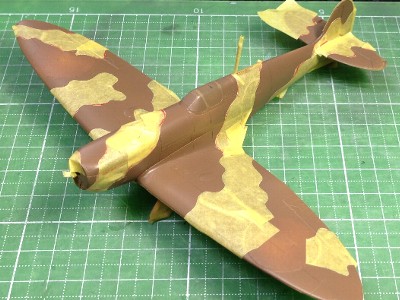 The yellow circle and camouflage colors were painted side by side. The camouflage pattern was masked with masking tape. |
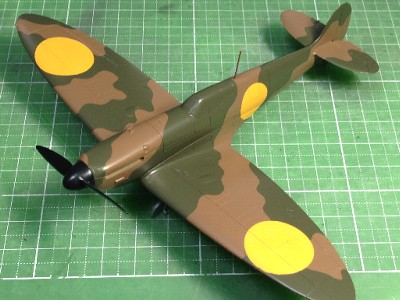 The surface was polished with Mr. Laplos #6000. |
 The under surface was painted Silver. |
 Blue and White were painted side by side. |
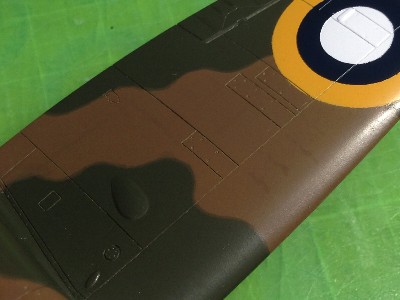 The demarcation line between Dark Earth and Dark Green were drawn by a fine brush with 50 : 50 of DE and DG. |
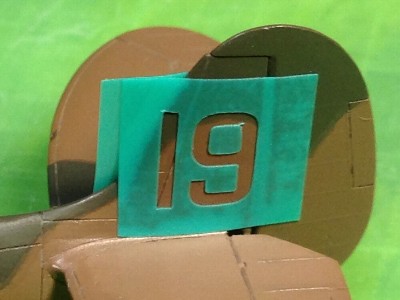 Masking film of the unit marking of "19" was cut with the cutting machine. |
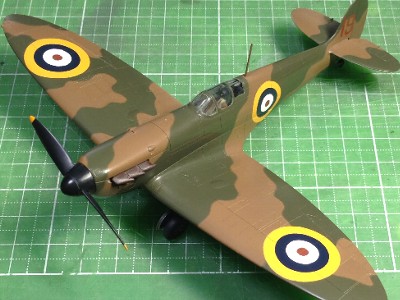 The roundel and unit marking were finished. |
 The serial number was custom made dry decals. |
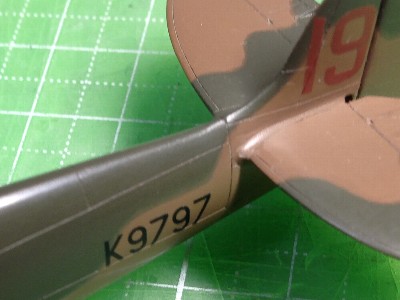 The fuselage serial number was the same. |
|
|
 |
 |
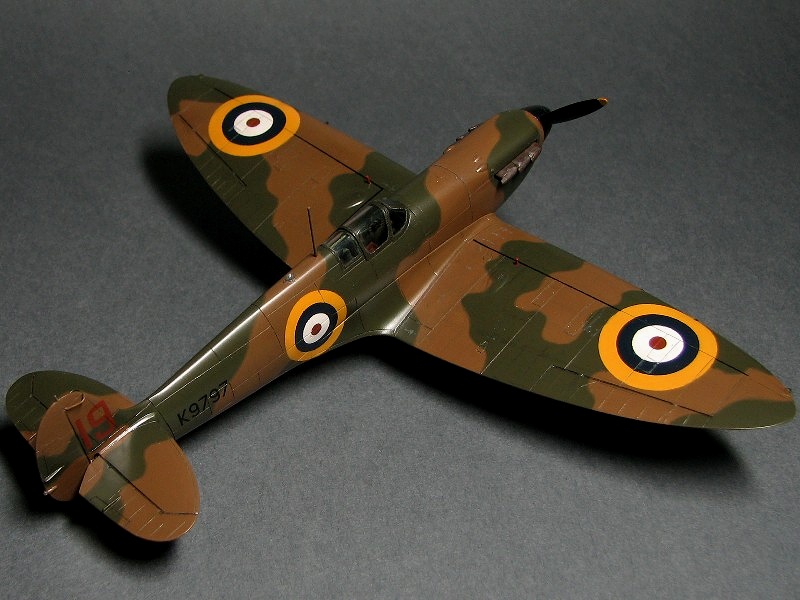 |
|
|
 |
|
|
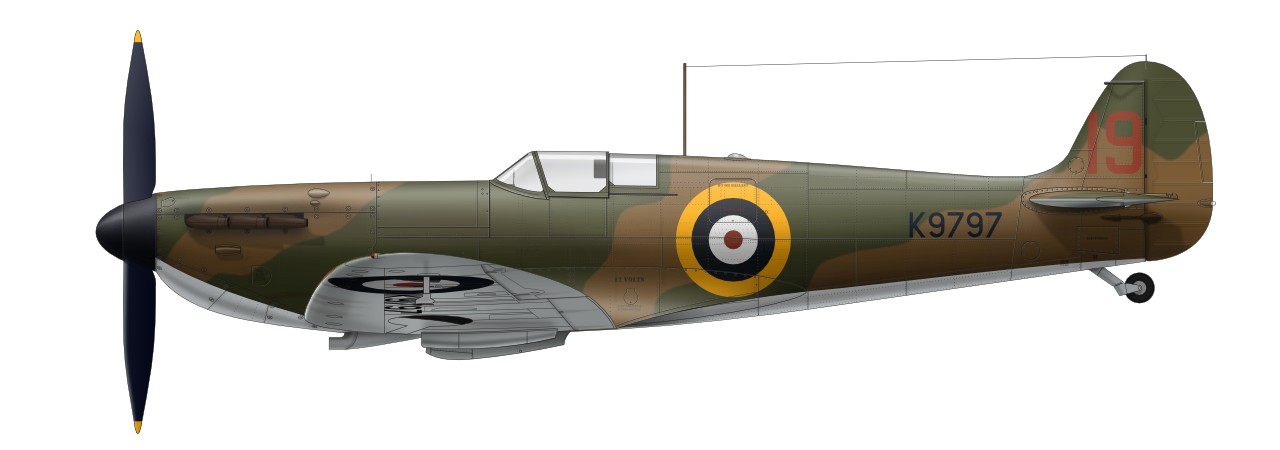
|
One more early Mk.I illustration is the same 19th Sqn., in April 1939. The new B type roundel might be painted on the deleted A-1 type roundel. The photo of the actual aircraft seems that the lower wing roundel was A type. |
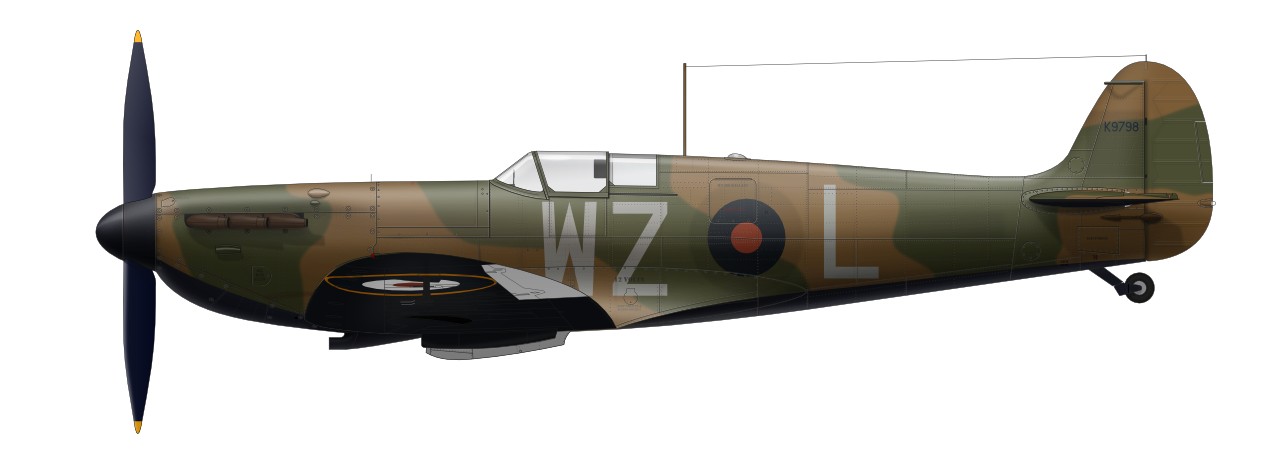
|
The next is late production Mk.I of 610 Sqn., July 1940. According to the article of "On Target special 8", the lower side was painted rather dark Duck Egg Blue which was equivalent with BS381 No1 Sky Blue. |
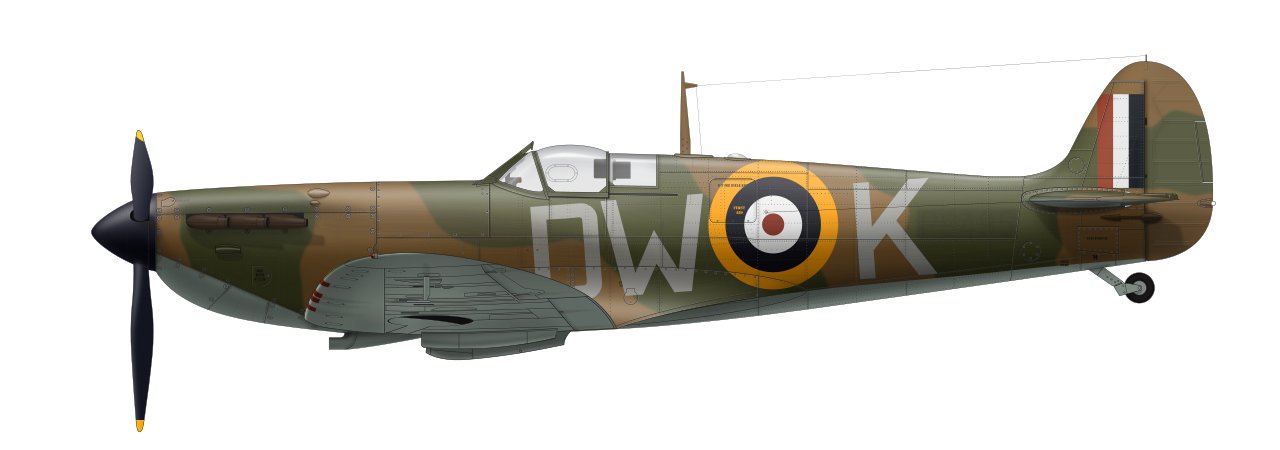
|
Another late Mk.I is 616 Sqn., in September 1940. According to "On Target special 8", the lower side was painted official Sky. |
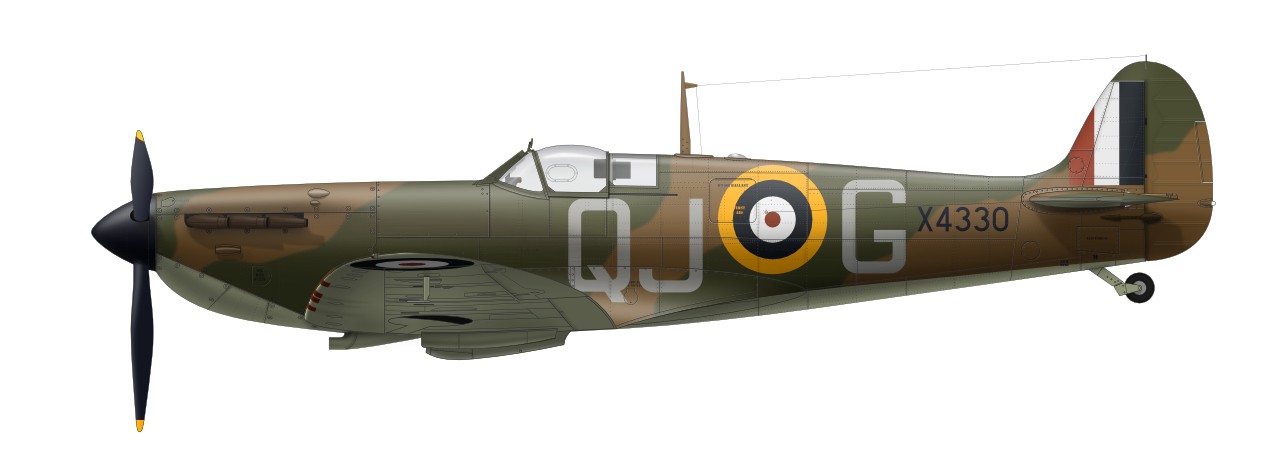
|
The next is Pink Spitfire PR.Mk.IE N3117 of PDU ,in July 1940. The original photo of this aircraft is included in "The Spitfire Story". The Mk.II type round spinner and Rotol metal blades are confirmed by this photo. The exact shape and position of the camera pod are unclear. |
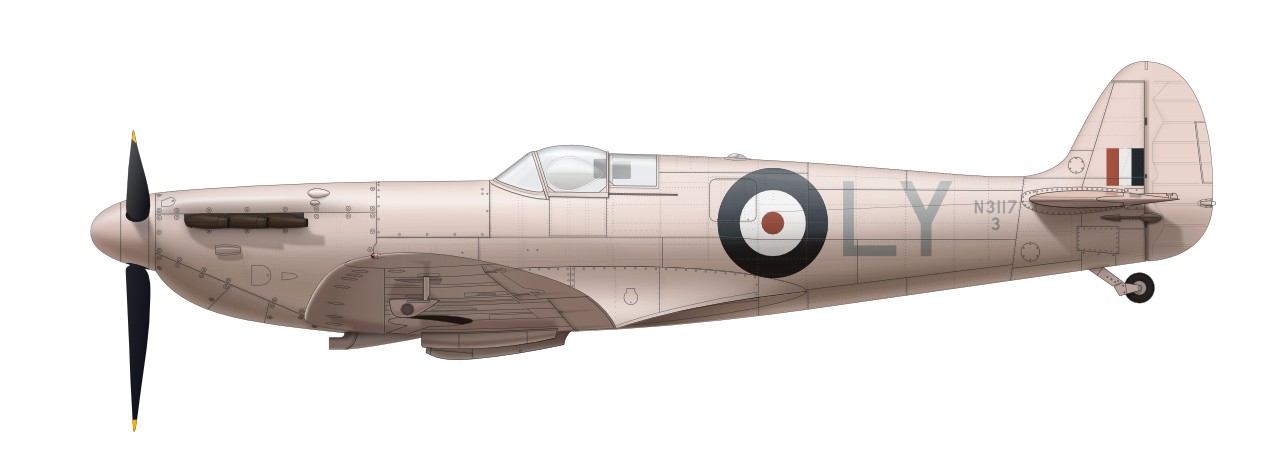
|
This PRU Blue aircraft is PR.Mk.IC R6903 of PRU, in February 1941. There seems to be the roundel on the lower wing according to the photo of "The Spitfire Story". Be care that the size and shape of the port fuel pod and starboard camera pod are different. The port pod is long and sharrow, the starboard is shot and deep. |
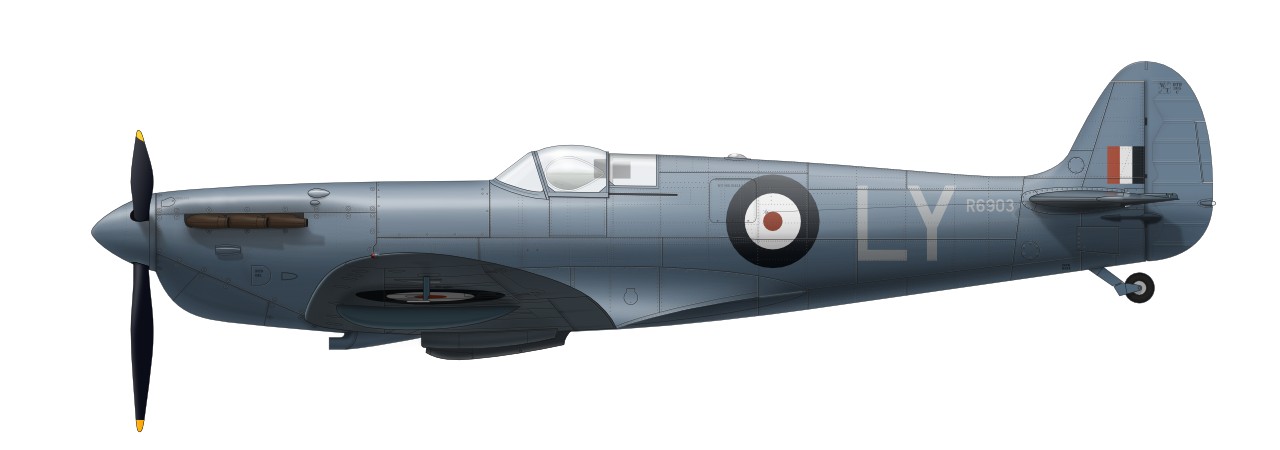
|
The next two Mk.Vs are from different manufacturers. The first one is Mk.Vb Castle Bromwich Aircraft Factory made BL627 of 317 Sqn.. The upper side was painted "Mixed Gray". Note the small air intake below the wind shield (port side only). |
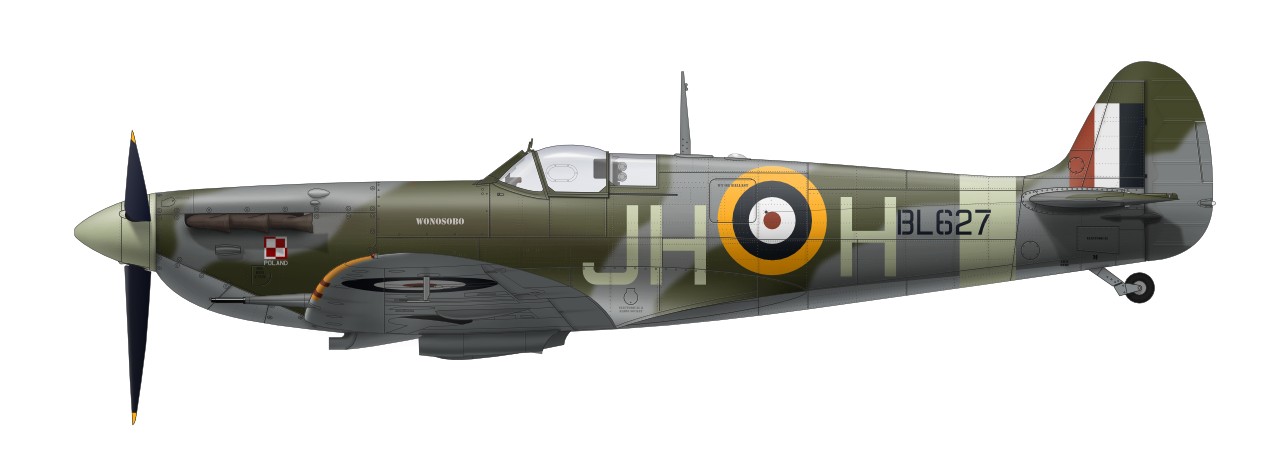
|
The second Vb is Supermarine made AA834 of 403 Sqn.. The canopy side is flat and there may be the knock out panel. See the differences of the location of the fuselage roundel and serial number. |
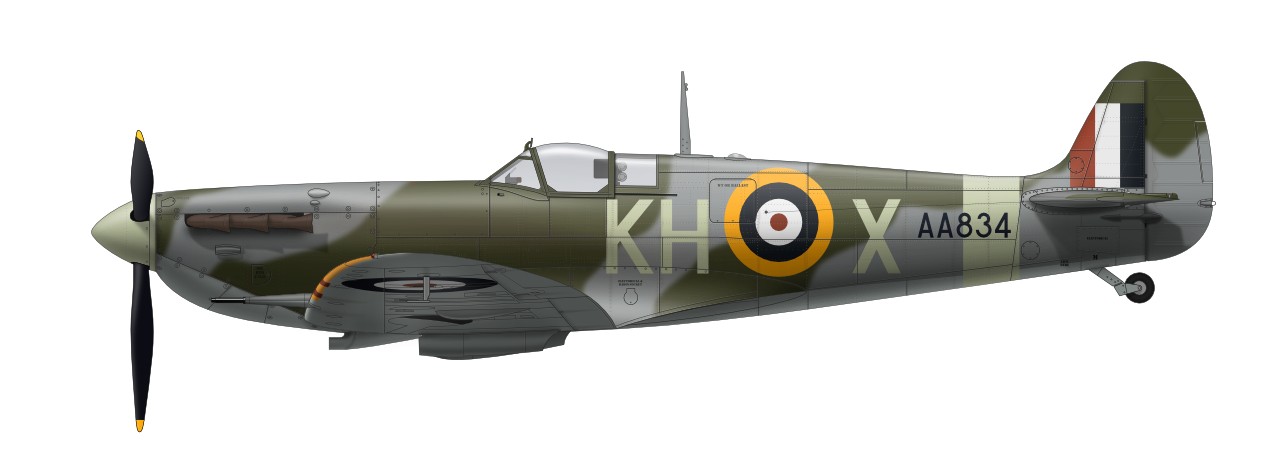
|
As far as Mk.V, the difference of the manufacturer significantly came out on its appearance. CBAF-built Mk.Vs equipped the long spinner and Rotol wooden blades except for the very early production model equipping the round spinner and Rotol metal blades. On the other side, all of Supermarine-built and Westland-built Mk.Vs equipped the short pointed spinner and De Havilland metal blades. Supermarine and Westland introduced the late-style windscreen and canopy in the early period. On the other hand, CBAF used the early-style windscreen and canopy for long time. See the following chronological table.
|